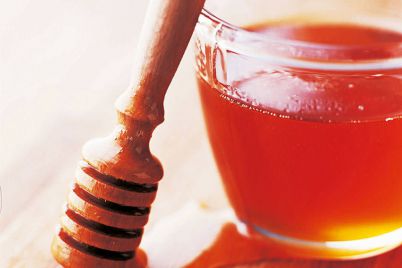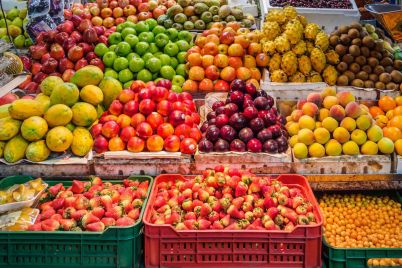
People hit the road for endless reasons: for love, for glory, for adventure, for thrills. They are escaping or seeking, starting a story or ending one; they are in search of ephemeral beauty and indelible moments. For the new and the familiar, for sensory thrills, for human contact, for risk and reward, for the journey and the story and the secrets. I travel for all these reasons. Which is another way of saying that I travel to eat.
It’s a pleasure, always, to eat good food. It’s the truth of a place—you don’t really know the soul of where you’re standing until you’ve taken in the deep sweetness of a long-cooked tomato sauce made by a nonna in Bologna, a buttery biscuit kissed with Tennessee sorghum syrup, the steamy-cheesy chewiness of the fresh pao de queijo found all over Sao Paulo. And that truth makes for a good story—one that ends up being told to a friend over drinks, in the pages of a glossy magazine, or in an Instagram caption (#wishyouwerehere). However we tell it, what we eat wherever we are is an anchor, a universal, a common human thread. My itineraries are often just outlines of the most efficient routes from one great bite to the next: restaurants to street vendors to markets to grocers to bakeries to drive-thrus to over-the-top tasting menus.
It’s rare—barring some cheeses and the occasional cured meat—that I eat something in my travels that I can’t bring, buy, or replicate back at home. Recipes—well, they travel beautifully. A slip of paper or an email-to-self or even a sharp-cornered hardcover cookbook is far easier to smuggle home than ten pounds of tomatoes and an actual Italian grandmother. A recipe lets you bring that ragu home with you and make it part of your life, lets you revisit your ten magical days in Italy every other Thursday night.
But if that were enough—if recipes were perfect portals to the thrills of travel—we’d never need to leave the house. If a Brazilian restaurant in Sacramento managed to perfectly recreate the flavors of a sultry Paulistano evening, there’d be no reason ever to hop on a plane. But here’s the real truth of traveling to eat, hard-won and well treasured from a lifetime of measuring my travels in bites and belt notches: the least important part of eating is the actual food itself. There’s no set of instructions on this earth detailed enough to replicate the briny punch of an oyster pulled out of Long Island Sound just moments before shucking, or the first bite of hot shawarma from a street vendor in Amman, warm flat bread embracing meat gently touched with cardamom and smoke.
In New York City, where I live, there’s a West Indian enclave where you can get street food as good as anything you’ll get in the Caribbean. Close your eyes on New York—the heaped-up mountain of trash bags waiting to be collected, the screeching buses, the bitter winter chill—and take a bite of a hot, spicy, saucy doubles with scant pepper and plenty of tamarind. You’ll swear you’re in Trinidad. The flavor is exactly right.
But if you really were eating doubles in Port of Spain—if you were on the drag at Queens Park Savannah, on a balmy night right after the sun’s gone down—there would be so much more than flavor going on. There’d be the sweet smoke wafting over from the oil-drum grill by the jerk chicken vendor, the doughy smack of a woman rolling out roti just barely out of time with the ‘90s reggae piping out from the open windows of the peanut-punch vendor’s truck. There’d be the last wisps of the day’s heat in the air, the smell of grass and rain and flowers, the diesel coughs of the mini trucks whipping by on the roundabout just outside the gate. There’d be the line of coconut vendors along the side of the park, tiny old men with wiry muscles and wild hair and whisper-bladed machetes, ready to lop off the top of a coconut and hand it over with a straw.
It’s a 22-minute straight shot on the subway to get from my front door to arguably the best doubles vendor in New York. It takes six hours—an hour to the airport, a five-hour flight, another hour’s drive once we land—to get from my front door to the best doubles vendor in Trinidad. In either place, what you get once you hand over your money is pretty much the same: two discs of spongy fried dough, a scoop of channa curry, generous doses of purple and green chutneys and a splash of a pepper sauce that’s equal parts floral and flame. In New York, that’s all you get—and it’s wonderful, it really is. But in Trinidad, you don’t just get your doubles; you get all the rest of Port of Spain with it. What you get when you eat at home may be good, but it’s just food. What you get when you eat while you’re traveling is everything. What you get is the entire world.
There’s a reason foods are where they are; open a pantry or look at a menu anywhere in the world and you’re reading a history of where you are: trade routes, wars, technology, immigration, colonialism, class, culture. These greens, grown in this soil, seasoned with these spices, cooked in this vessel, over fire burning this fuel. There’s context, there’s story, there’s tragedy, there’s farce. A dish can travel anywhere, but there’s always a reason it began where it did, a reason it ended up where it did. There’s always a story, and it starts with the first bite.




